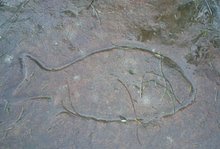 Manly already has an extreme density of pubs and other venues to consume alcohol in. Now the small lanes will be developed to 'entice' us to drink there as well. At night they “will become a buzzing lane way bar.“ To complement "The pub culture in Sydney" another adult shop is thrown in.
Manly already has an extreme density of pubs and other venues to consume alcohol in. Now the small lanes will be developed to 'entice' us to drink there as well. At night they “will become a buzzing lane way bar.“ To complement "The pub culture in Sydney" another adult shop is thrown in.
Alcohol-related incidents are “ the state's biggest single crime factor”, costing $50 million a year and contributing to “ violence, malicious damage, public disorder and road fatalities” The cost of negative health effects and social disintegration is probably not reflected by that sum.
A laissez-faire approach to urban 'planning' allows corporate culture to usurp increasingly more public space and intensify their commercial activities. A space/time environment is constructed primarily for rapid profit generation, which the 'consumer' is allowed to immerse themselves in.
In an accelerated globalised world the dominant lifestyle for all is to be 'on the go', drive-through & grab something, getting things done, getting it over with and maybe getting there. In this mobilised and intensified culture the dominant lifestyle for all is to be mobile and flexible. The 'fast world' of fast food, fast drinks, fast travel, fast relationships etc are part of the speedy packages offered by Big Business.
Our social practices take place in a specific space and time, they are place making and also the construction of who we are:"A city isn’t just a place to live, to shop, to go out and have kids play. It’s a place that implicates how one derives one’s ethics, how one develops a sense of justice, how one learns to talk with and learn from people who are unlike oneself, which is how a human being becomes human."
"The Civitas of Seeing"(1989), Richard Sennet
One approach to culture the human within us and amongst us is mindful and slow living. This movement has been adopted in various cities. A (re) discovery of place-(making) gives distinctiveness and identity to a location. The Slow Cities movement has the following aims:
- Preserving and maintaining the local natural and built environments;
- Developing infrastructure in harmony with the natural landscape and its use;
- Using technology to improve quality of life and the natural and urban environment;
- Encouraging the use and production of local foodstuffs using eco-sensitive methods;
- Supporting production based on cultural traditions in the local area;
- Promote quality of local hospitality. CommunityBuilders NSW
- The city centres are free of cars and have functional cycle paths and real pedestrian zones. Sustainable mobility, such as walking and biking is encouraged.
- The use of sustainable energy, consideration of the natural and social ecology are integrative.
- Air pollution, noise pollution and light pollution are kept in check.
- Public places are inviting and free of ads (solid state spam) and neon lights.
- New developments have to conform to an eco friendly architecture.
Environments open to a participatory and open difference allow creative people to escape the self-sameness of iconic bland-burbia. Attempts to transplant 'the good bits' from cities in to the mall & sprawl burbs could only be cosmetic. The 'untidy' nature of un-'developed', teeming urban places and its productivity would be a night-mare in tidy town.
When corporate gaols and the aims of individuals seem to match in that both seek rapid gain before any consideration of civil society, then sustainability is impossible. When the private mind-set does not need public spaces, but most 'life' takes place in one's own castle, the civic life beyond the BBQ or sport is a burden. The public space/arena and untidy/uncertain urban spaces not valorized are unthinkable in Australia. Berlin is open to differences, open to allow creative forces to find niche environments to flourish in. It encourages participatory co-construction of the urban interface by its residents. One can 'Get a Life' in the public ecology instead of in the private form only.
Links:
Monoculture or creative environments
LIQUID CITIES: BERLIN AND SYDNEY IN CONVERSATION
New Urbanism Charter
Creating Ordinary Places: Slow Cities in a Fast World,Paul L Knox, Journal of Urban Design, Vol. 10. No. 1, 1–11, February 2005
Jason Adams, Paul Virilio and the Phenomenology of the Political Body, 2003











2 comments:
Yes - we have similar problems in Perth - probably worse at the moment because all of the mining activity is causing a massive population explosion.
I am intrigued by the google map on your blog - how do you embed the map?
Yes mining & sprawl are bad news.
I like the bush-regeneration work presented on your blog.
Regarding Googlemap: Have Google account >maps> my maps> search for your location> top right:'link to this page', customize/embed. Pictures can also be embedded instead of placemarkers. The latest how to as video: http://www.youtube.com/watch?v=Taujbud9DKA
For bush re-generation it is probably a good idea to have some static screenshots of Googlemaps as posts to be able to compare them to the dynamic version in some time.
Love to see some tags/label on your blog to find all the beaut pics/posts easily.
For more mapping ideas: http://del.icio.us/strongCurrent/googleearth
Keep up the good work
Post a Comment